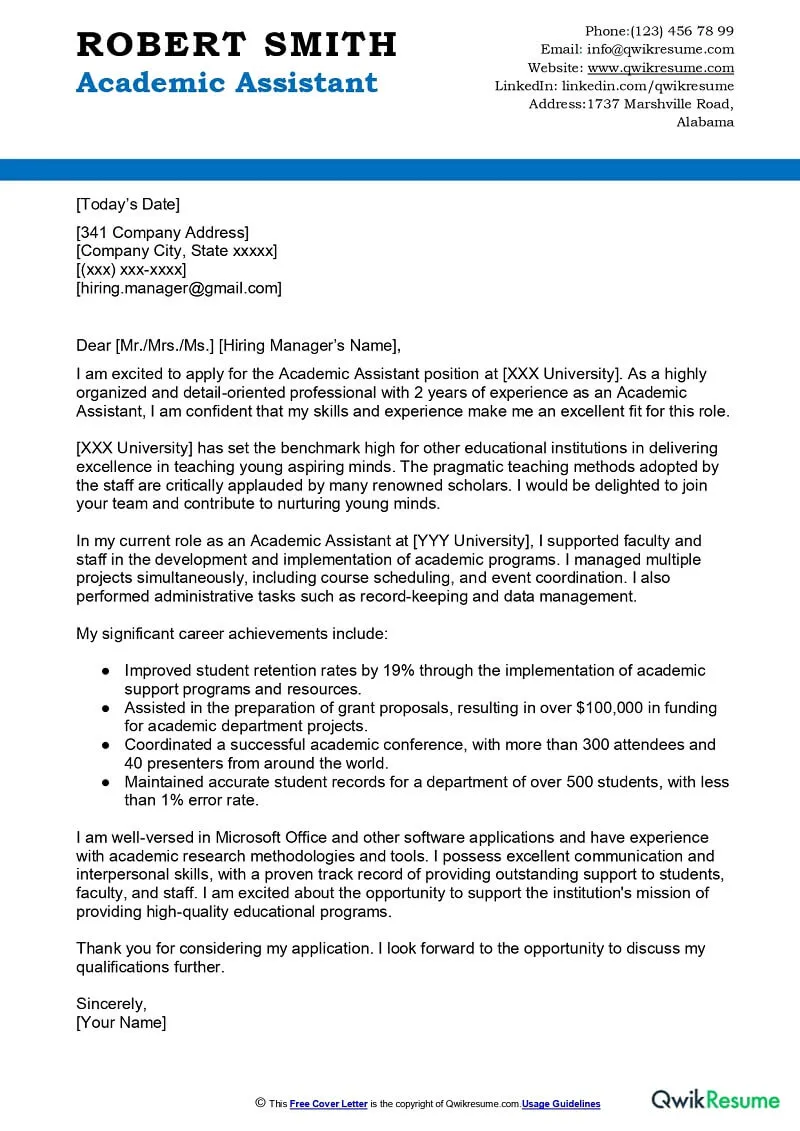What is an Academic Cover Letter
An academic cover letter is a crucial document for anyone applying for a position within academia. Unlike cover letters for industry jobs, academic cover letters have a specific focus and structure tailored to highlight the candidate’s research, teaching experience, and alignment with the institution’s values and requirements. This document serves as an introduction to your application, providing the search committee with a comprehensive overview of your qualifications, research interests, teaching philosophy, and how you can contribute to the department and university as a whole. It is your opportunity to showcase your suitability for the role and make a compelling case for why you should be considered for an interview. It goes beyond the resume, providing context and narrative to your achievements and skills.
Key Differences from Other Cover Letters
Academic cover letters differ significantly from those used for non-academic positions. They are typically more detailed and emphasize research accomplishments, publications, and teaching experience. Academic cover letters are often longer, sometimes extending to two or three pages, to provide sufficient space to discuss the candidate’s scholarly work and contributions to the field. They must demonstrate a deep understanding of the university’s mission and how the candidate’s goals align with those of the institution. The focus is on intellectual contributions, scholarly pursuits, and the ability to foster an environment of academic excellence. Unlike industry cover letters, academic versions require a strong emphasis on intellectual curiosity, research methodology, and teaching philosophy.
Purpose and Importance
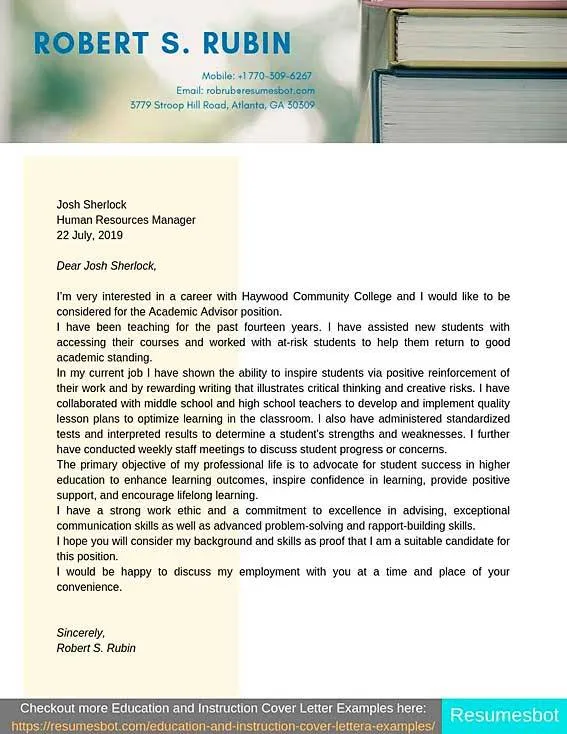
The primary purpose of an academic cover letter is to introduce yourself to the search committee and persuade them to consider you for an interview. It serves as a narrative that complements your curriculum vitae (CV), providing context, depth, and a clear picture of your skills, experiences, and potential. It is a critical opportunity to demonstrate your suitability for the specific position and institution. A well-crafted cover letter showcases your understanding of the job requirements, your alignment with the university’s mission, and your potential to make significant contributions to the department and field. A strong cover letter greatly increases your chances of being selected for an interview, making it an indispensable part of your application package. It gives you the platform to showcase your unique qualifications and express your passion for the academic role.
Structure and Format
Header and Contact Information
The header of an academic cover letter should include your full name, address, phone number, and professional email address. This information should be placed at the top left or right corner of the document. Below your contact information, include the date, and then the recipient’s information which typically includes the hiring committee chair’s name, title, department, and university address. Make sure all information is accurate and easy to read. This ensures the hiring committee can easily contact you.
Opening Paragraph
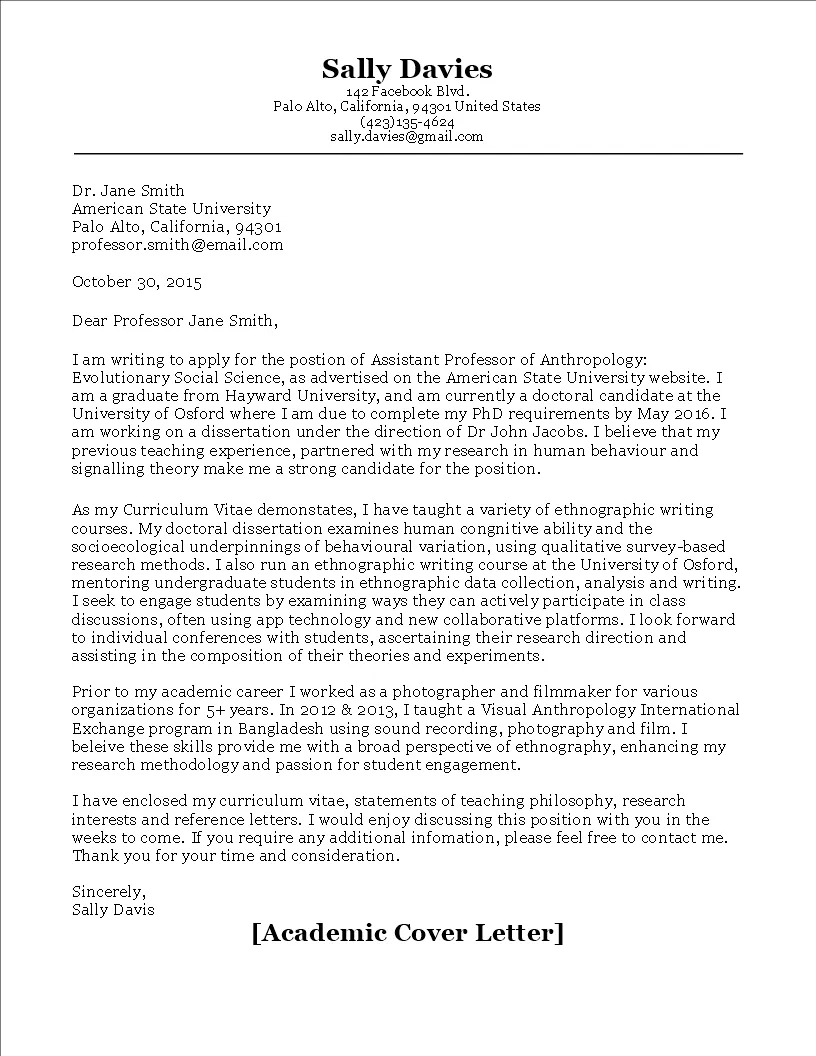
The opening paragraph should immediately grab the reader’s attention. State the position you are applying for and where you saw the advertisement. Briefly mention why you are interested in the position and the institution. Highlight your most relevant qualifications or achievements that align with the job description. The aim is to make a strong first impression and convince the reader to continue reading. Ensure your opening is engaging and tailored to the specific requirements of the role.
Body Paragraphs
The body paragraphs should provide detailed information on your qualifications. They are the core of the cover letter and should expand on the key points made in your opening paragraph. Structure the body paragraphs to address the specific requirements outlined in the job description. Use concrete examples to demonstrate your research, teaching, and service experiences. Highlight your accomplishments, focusing on their impact and relevance to the position. Be specific, using quantifiable data where possible to support your claims.
Highlighting Research and Publications
In your body paragraphs, focus on your research and publications. Provide a concise overview of your research interests and methodologies. Mention your most significant publications, including their impact and where they were published. Discuss any grants or fellowships you have received. Clearly articulate how your research aligns with the department’s research priorities. If your work has resulted in any awards or recognition, be sure to highlight these achievements. Emphasize the originality and significance of your work and its potential contribution to the field of study.
Showcasing Teaching Experience
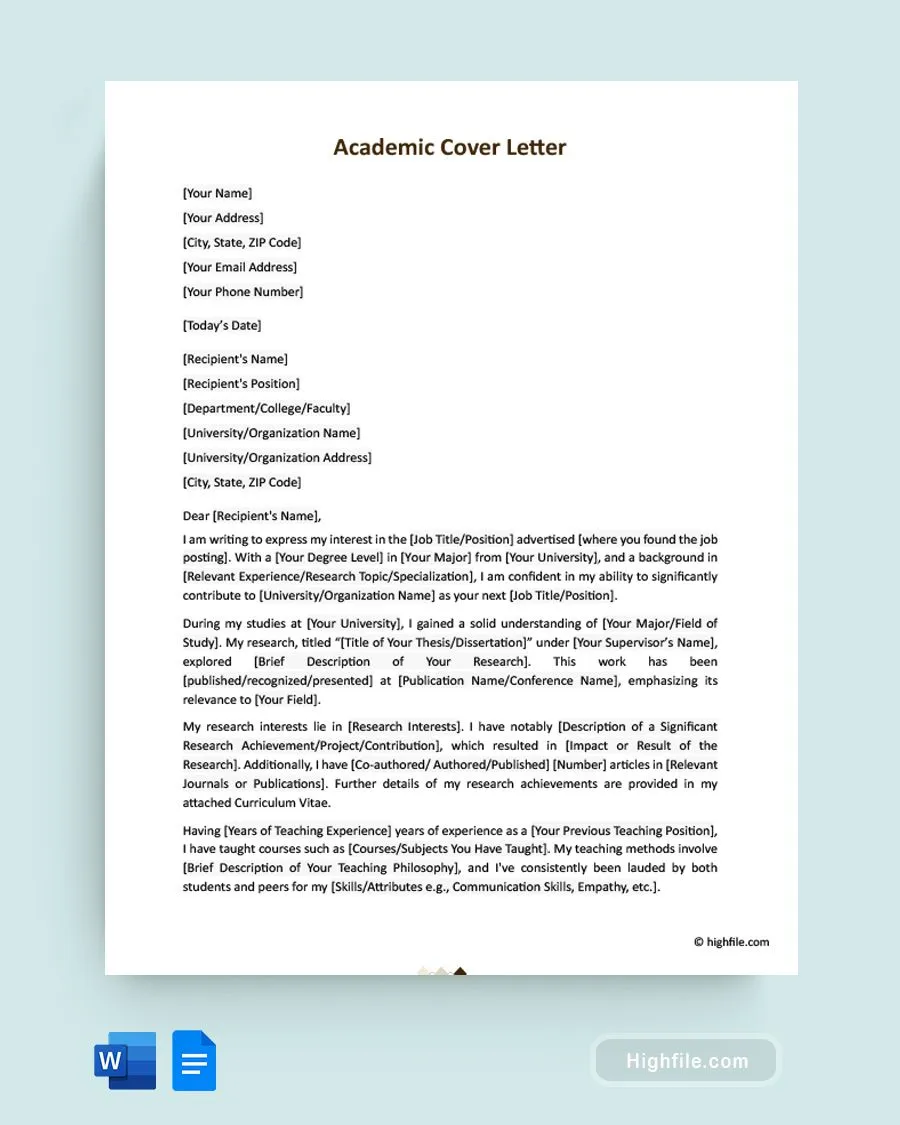
If you have teaching experience, provide detailed information about your teaching philosophy, methodologies, and courses taught. Discuss your ability to engage students, foster a positive learning environment, and assess student learning effectively. Mention any innovative teaching practices you have used or any teaching awards you have received. If applicable, briefly describe your approach to curriculum development and assessment. Also, emphasize your ability to mentor students and contribute to their academic and professional development. Tailor your description to the specific teaching needs of the position, highlighting relevant skills and experiences.
Addressing Specific Requirements
Carefully review the job description and address all specific requirements mentioned. Tailor your cover letter to the unique needs and priorities of the hiring department. Provide evidence of your experience in areas like grant writing, program development, or community engagement if these are listed as requirements. Show how your skills and experiences meet each of the requirements. Clearly explain how you can contribute to the department’s goals. This is where you demonstrate that you have carefully considered the position and are a perfect fit.
Closing Paragraph and Call to Action
In the closing paragraph, reiterate your interest in the position and the institution. Summarize your key qualifications and reiterate your enthusiasm for the opportunity. Express your gratitude for the committee’s time and consideration. Include a clear call to action, such as stating your availability for an interview or your willingness to provide further information. End on a confident and professional note, leaving the reader with a positive impression.
Essential Content for Success
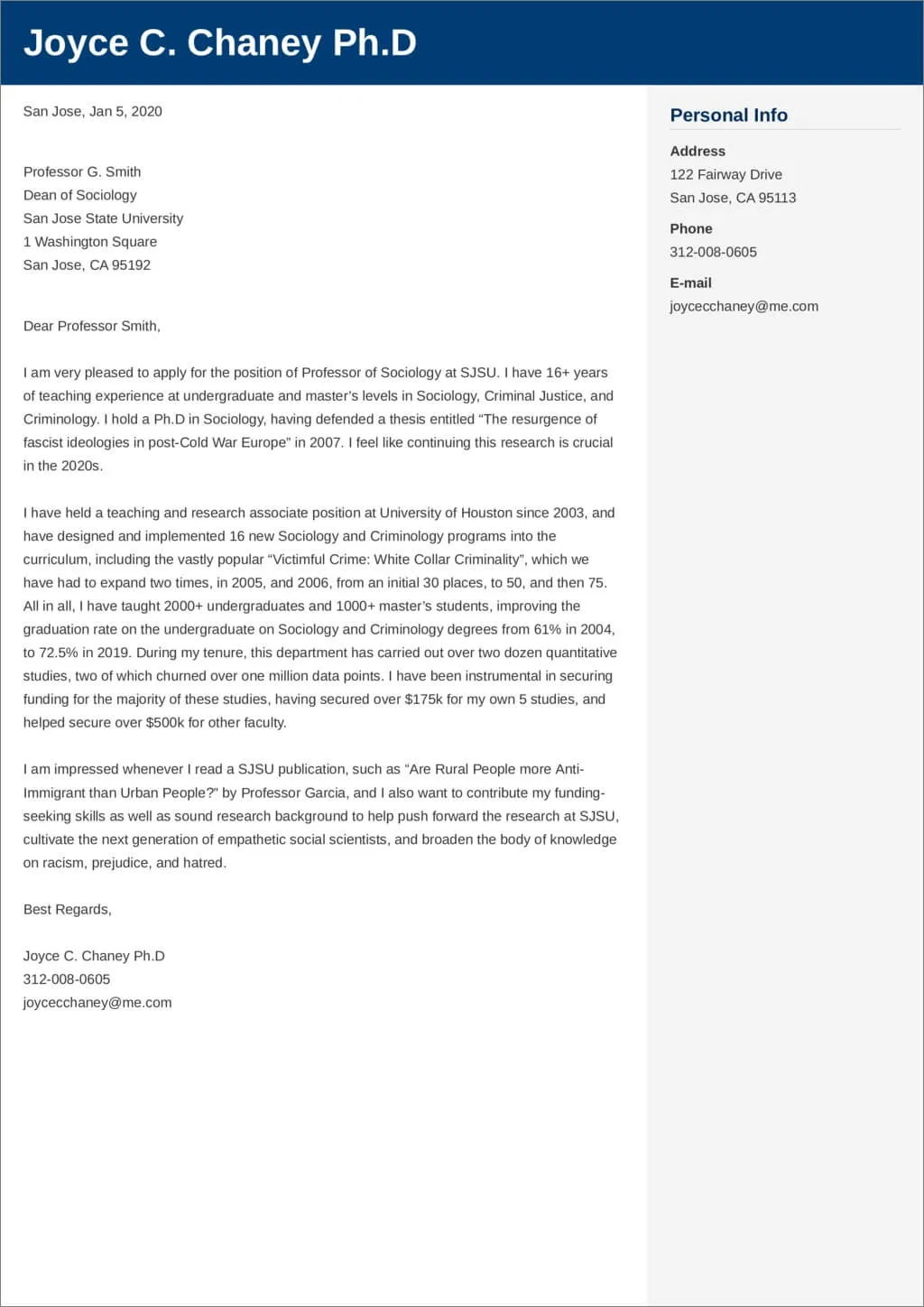
Tailoring to the Specific Position
Customization is essential for an effective academic cover letter. Avoid using a generic template. Instead, carefully analyze the job description and tailor your letter to match its specific requirements and the institution’s mission. Highlight the skills, experiences, and accomplishments that align with the position’s needs. Demonstrate that you understand the role and are specifically suited for it. The letter should reflect a genuine interest in the position and the university, and show that you have researched the department and its faculty.
Demonstrating Fit with the Institution
Demonstrate a clear understanding of the institution’s mission, values, and strategic goals. Show how your research interests, teaching philosophy, and service contributions align with these. Reference specific programs, initiatives, or faculty members that resonate with your own work. Explain how your presence will enrich the department and the broader academic community. Make sure that your values and professional goals are compatible with the values of the university. Highlight your alignment with the institution’s culture and goals to show you are a good fit.
Emphasizing Skills and Achievements
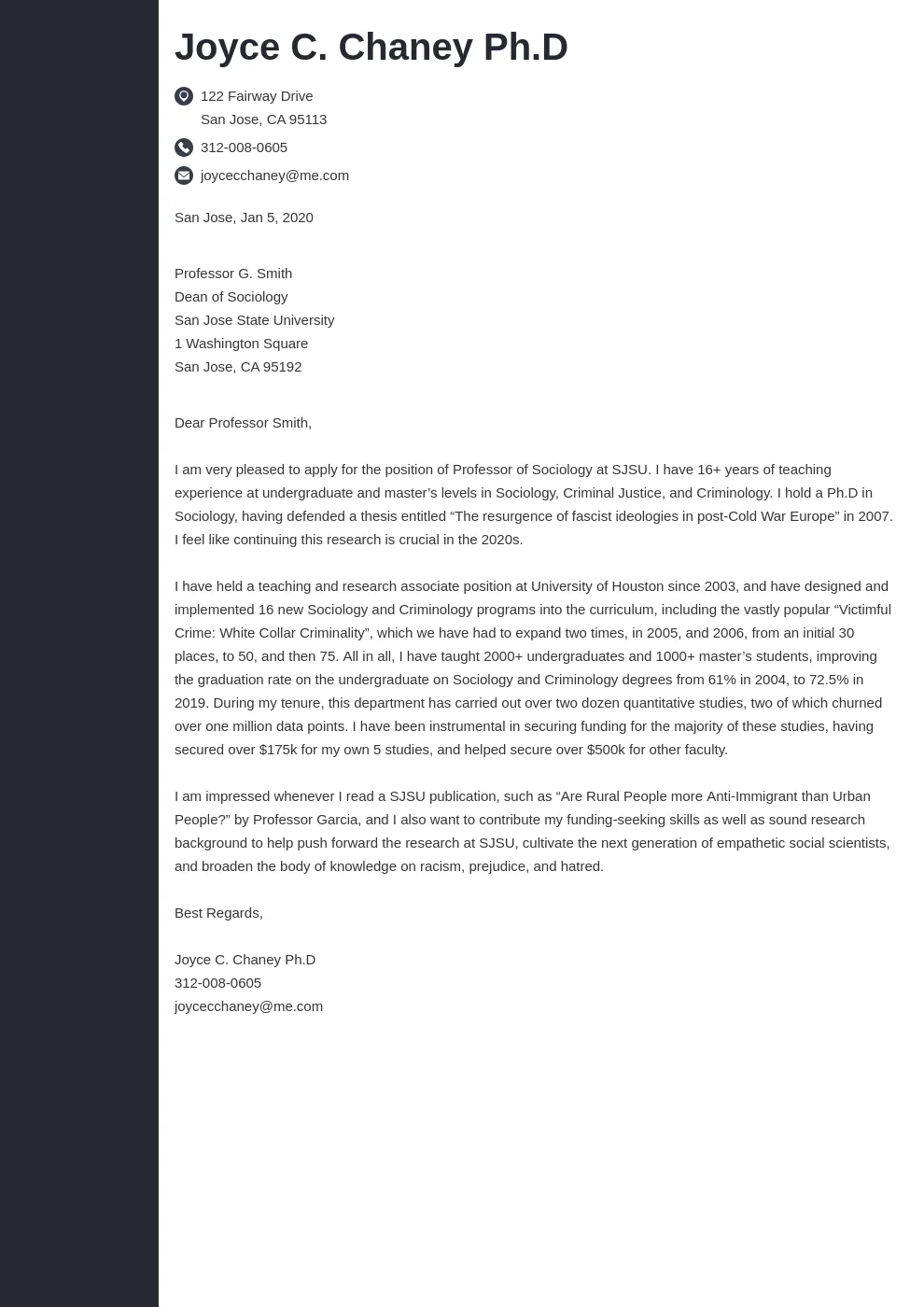
Focus on the most relevant skills and accomplishments that demonstrate your suitability for the position. Use strong action verbs and provide specific examples to illustrate your abilities. Quantify your achievements whenever possible, such as the number of publications, grants awarded, or students mentored. Highlight any awards, recognition, or special projects that showcase your expertise. Ensure your letter reflects the impact of your work and its contribution to the field of study.
Formatting and Style
Font, Margins, and Overall Presentation
Maintain a professional and polished appearance. Choose a clean and readable font, such as Times New Roman, Arial, or Calibri, with a font size between 11 and 12 points. Use standard one-inch margins on all sides. Ensure consistent spacing and formatting throughout the document. The overall presentation should be neat, organized, and easy to read. A well-formatted cover letter reflects attention to detail and professionalism.
Proofreading and Editing
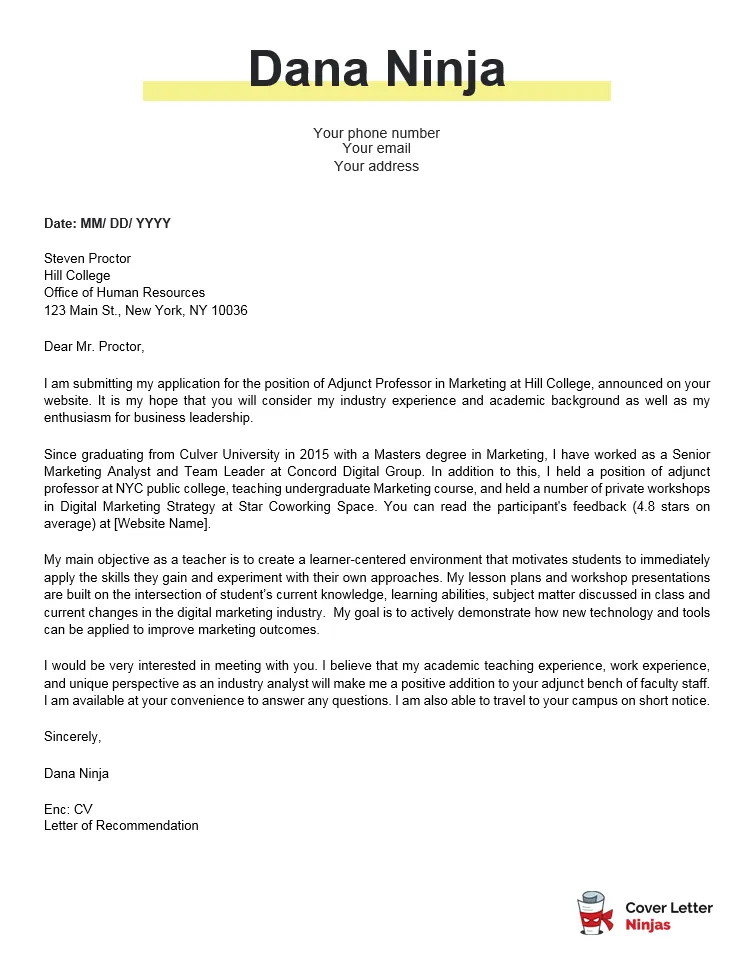
Proofread your cover letter meticulously for any typos, grammatical errors, or inconsistencies. These errors can detract from your credibility and professionalism. Ask a colleague, mentor, or career services professional to review your cover letter for feedback. Ensure the language is clear, concise, and compelling. A well-edited cover letter is crucial for a positive impression.
Examples and Templates
Cover Letter Example: Research Position
A research position cover letter should highlight your research experience, publications, grants, and methodologies. It should emphasize your research interests and how they align with the department’s research priorities. Demonstrate your understanding of the research area and your ability to contribute to the department’s research goals. Use the example of your publications. Demonstrate how your research is innovative and will contribute to the academic field.
Cover Letter Example: Teaching Position
A teaching position cover letter should focus on your teaching philosophy, methodologies, and courses taught. Describe your ability to engage students, foster a positive learning environment, and assess student learning effectively. Highlight your teaching experience, including any teaching awards or innovative practices. Discuss how your teaching style aligns with the department’s educational goals. Include the methods used for mentoring students. Also, highlight how you can contribute to the development of the curriculum.
Common Mistakes to Avoid
Generic Language and Lack of Specificity
Avoid using generic language and templates that can be used for any job. Tailor your cover letter to each specific position. Provide specific examples of your skills and experiences, rather than making general statements. Highlight the unique ways you will contribute to the department. Demonstrate that you have researched the position and are specifically suited for it. Generic cover letters show a lack of genuine interest and are unlikely to impress a hiring committee.
Ignoring Instructions and Requirements
Carefully read and follow all instructions and requirements listed in the job description. Addressing all the specific requirements is essential for your application. If the job posting asks for specific information or requires a particular format, make sure to provide it. Failing to follow instructions demonstrates a lack of attention to detail and can result in your application being rejected. Always double-check that your letter meets all the stated requirements.
Typos and Grammatical Errors
Typos and grammatical errors undermine your credibility and make you look unprofessional. Proofread your cover letter carefully, and consider having someone else review it as well. These errors can distract the reader from your qualifications and lead to a negative impression. Ensure that your writing is clear, concise, and free of errors. A polished cover letter shows that you pay attention to detail.
Final Thoughts
Writing a compelling academic cover letter is a crucial step in the academic job application process. By following these guidelines, you can create a cover letter that showcases your qualifications, demonstrates your alignment with the institution, and increases your chances of being selected for an interview. Remember to tailor your letter to each position, emphasize your skills and achievements, and proofread carefully. Your cover letter is an opportunity to make a strong first impression and pave the way for a successful academic career.
